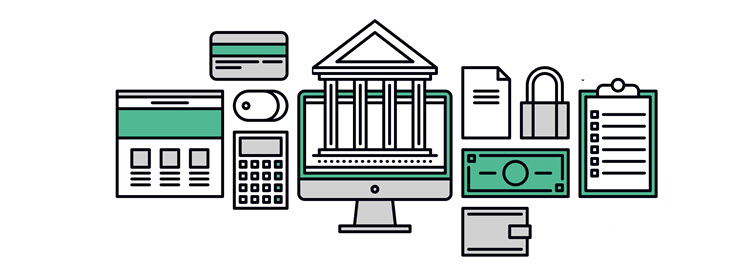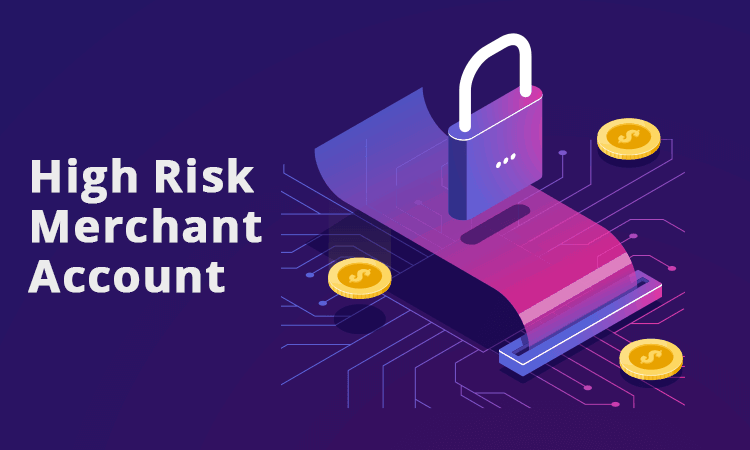A merchant account is required for a business to accept online payments from customers or other businesses.
The procedure to apply for a merchant account is standardized and regulated. However, some merchants or industries are considered “high risk” and may face extra hurdles when setting up a merchant account.
Read on to learn more about what high-risk merchant accounts are and what to consider when applying for one.
What Is a High-Risk Merchant Account?
A high-risk merchant account is a payment processing account for a high-risk business. A Business is considered high risk if there is a perceived risk of financial loss.
To underwrite a merchant account, a bank must approve the merchant for business banking and merchant services. A merchant needs to know if their business is classified as high risk by the bank or credit card associations.
High-risk merchants might have difficulty in finding payment processors, face stricter regulations on their business, and have higher fees for accepting payments.
Note: If you have decided on launching a high-risk business, you should learn more about MATCH list i.e. Terminated Merchant File. It is used for screening merchant accounts prior to their approval for payment processing.
High-Risk Merchant Account Factors

Most online payment services work with low-risk merchants because they’re less likely to attract fraudulent transactions. This leaves high-risk merchants struggling to find payment services for their needs.
Each payment processor and payment gateway service has its own definition of a “high-risk” business. In most cases, the financial risk that the merchant’s ecommerce represents is the deciding factor for their payment service options.
Credit card companies have created these steps to determine a merchant’s risk level. The more transactions a business processes, the more risk it poses to credit card organizations.
The following four risk levels determine a merchant’s status:
| Your Level Is | Your Business Does | You Should |
|---|---|---|
| 4 | - Less than 20,000 ecommerce transactions per year - Less than 1 million other transactions per year |
- Complete and annual risk assessment using an SAQ - Conduct quarterly PCI scans |
| 3 | 20,000 – 1 million transactions per year | - Complete and annual risk assessment using an SAQ - Conduct quarterly PCI scans |
| 2 | - 1 – 6 million transactions per year | - Conduct an annual internal audit |
| 1 | - More than 6 million transactions per year | - Conduct an annual internal audit - Conduct quarterly PCI scans |
A merchant must be aware of their risk level to know which documents they need and which procedures they must follow. Merchants are usually not aware that these risk levels exist.
Risk factors for a business could be as follows:
- No credit or poor credit
- Selling products or services defined as high risk by VISA and MasterCard
- An industry or business model that has a history of fraud or chargeback issues
- Average transaction above $500
- Accepting payments in different currencies
- Companies located or operating in high-risk countries and territories
- Not being registered with local regulatory agencies
- Offering free trials
- Offering subscriptions or receiving recurring payments
- Infrequent processing
Even if a business is squeaky clean, banks judge the industry as a whole and consider other businesses in the industry as a benchmark. So, for example, even though a travel company has no history of fraudulent transactions, competitors in the industry might. Hence, travel is considered high risk.
Note: Learn about the new Mastercard rules aimed to prevent unlawful activity regarding illegal adult content merchants publish.
What Industries Are Considered High Risk?

We recommend that merchants always consult with their payment processor, gateway provider, and bank ahead of time to make sure they accept payments for these types of high-risk businesses.
Below are examples of potentially high-risk industries:
- Financial Services
- Accounting Services
- Alcohol
- Cryptocurrency
- Legal Services
- Debt services
- Newspapers and Print Publications
- Pawnshops
- Transportation and Trucking
- Telemarketing
- Direct Marketing - Inbound Telemarketing
- Online auctions
- Online Gambling
- Adult Entertainment
- Cannabis
- Insurance
- Real Estate
- Firearm dealers
- Oil and Gas
- Retail
- Travel Agencies
- Telecommunications (VOIP or Calling Cards)
- Online dating sites
How Does High-Risk Payment Processing Work?

A payment processing procedure includes the following parties:
- Customer
- Merchant
- Payment gateway
- Payment service provider
- Payment card association
- Issuing bank
- Issuer’s payment processor
High-risk payment processing isn’t much different from low-risk payment processing. However, high-risk businesses must adhere to additional regulations:
- Using two-factor authentication may be required to strengthen the identity-checking procedure. Some payment processors opt for three and multi-factor authentication, as well.
- Payment service providers can limit the number of transactions that can be made to a high-risk merchant account monthly.
- The payment processor can deny every transaction that surpasses the agreed amount of money that a merchant is allowed to receive from customers monthly.
- Up to 15% of every transfer made to a high-risk merchant account may be used as a rolling reserve. It can be used in case of chargebacks, limited processing options, gateways, and high processing rates).
Merchant Account or Third-Party Payment Processor?
Many merchants choose to start taking payments with third-party payment processors because they offer benefits such as fraud protection, PCI compliance, and regulatory guidance, and they don’t require upfront or monthly upkeep fees. The payment processor provides the merchant account and vouches for the business.
When deciding whether to work with a third-party processor, merchant’s main considerations are the size of the business, their prices, services, number or products, software integrations, and how they plan to sell and deliver products (if they are tangible).
If a business is small or medium-sized with few monthly transactions that need processing, paying the monthly upkeep of a dedicated merchant account might not be the right option. In this case, using a third-party payment processor helps the business take payments without the hassle of setting up a dedicated merchant account. With a third-party payment processor, merchants are only charged for the transactions that occur.
CCBill Tip Considering a third-party payment processor to take your online payments for your high-risk business? With over 20 years of expertise working with complex business models, CCBill can help take the guesswork out of accepting payments for your high-risk business.
High-Risk Merchant Account Benefits

High-risk merchant accounts face demanding regulations, but they come with benefits such as:
- Recurring payments. Recurring payments are available to all high-risk merchant accounts, but not to low-risk accounts.
- Global billing. High-risk merchant accounts are not limited to collecting payments in a certain region. Merchants can collect payments worldwide.
- Wider variety of services and products. Because a high-risk account needs to go through a rigorous screening procedure, the business is approved to provide a wider range of services.
- Flexible payment options. High-risk businesses have access to a wider variety of global and local payment methods. This ensures that consumers always have access to their preferred payment methods.
How Do I Get a High-Risk Merchant Account?
When a merchant determines that they qualify for a high-risk account, they follow the steps below to get one:
- Find a reliable payment processor or merchant services provider that provides high-risk accounts that meet the business’s unique requirements.
- Send an application to open such an account. Most payment processors accept online applications.
- Undergo a detailed analysis of business operations and financial statements performed by the payment processor’s risk managers. They analyze the credit history and the processing history of every applicant, including chargebacks, the total processing volume, and the total number of transactions. Merchants need to submit the list of all the shareholders.
- Wait until risk managers decide whether the business qualifies for a high-risk merchant account.
Every payment processor dealing with high-risk merchant accounts approaches every business individually. They check everything, from potential payment fraud and scams to the chargeback ratio.
Only when payment processors know everything about the business are they able to provide or deny payment processing services to high-risk merchants.
Finding a High-Risk Merchant Services Provider

Merchants in search for a high-risk merchant account provider need to consider the following before signing a contract:
- Contract length. Choose a merchant services provider that doesn’t lock you in with a long-term contract. Your business requirements might change over time and you should be able to cancel the agreement within a reasonable timeframe (e.g., one-months’ notice).
- Support. Ask the service provider what types of support you can count on if there are any issues with customers’ payments. They should describe what procedures they apply in case of any disputes or returns. Inquire about their practices and previous experiences with businesses similar to yours.
- Technical support. Find out how the provider handles technical issues that might prevent customers from completing transactions. Ask them to explain the onboarding procedure for merchants and describe the features you have at your disposal to receive money from your clients.
- Adaptability. Merchants sometimes open a high-risk merchant account under one set of conditions and need to update them along the way. A higher processing volume or more increased transactions are common reasons for such additions. Learn in advance whether the payment processor allows for such changes on the go.
- Security. Since high-risk merchants attract more cyberattacks and fraud, they need excellent protection to keep them safe on the Internet. Ask other merchants in your industry about their experiences.
- Industry coverage. Not all high-risk merchant payment processors cover all industries. If a company doesn’t have a developed set of rules and practices for your niche, you may find it impossible to work with them.
- Payment options. Merchants need to decide what payment types they want to accept via their high-risk merchant accounts. They can go for the entire set: ACH payments, credit cards, e-checks, and wire transfer, or use only some of these payment options. It’s necessary to consider the geographical scope of business operations and payment processing when selecting payment options, as well.
- Chargeback Help. Every business faces a chargeback at some point. When picking a high-risk payment processor, it’s important to understand that they >handle chargeback issues confidently and help merchants reduce and avoid future issues. A reliable payment processor knows how to assist high-risk merchants with chargebacks, like maintaining a negative database on chargebacks so that merchants know what consumers have filed for chargeback.
- PCI Compliance. High-risk merchants need to find a payment processor that will ensure proper compliance with the technical and operational standards prescribed by the PCI Security Standard Council.
Conclusion
Running a high-risk business can be tricky, but it can reap great rewards. Once you understand what a high-risk merchant account is, you can get your documents in order and start accepting payments for your products or services.
With the right payment processor by your side, you’ll avoid many potential issues and ensure seamless development of your online business.
